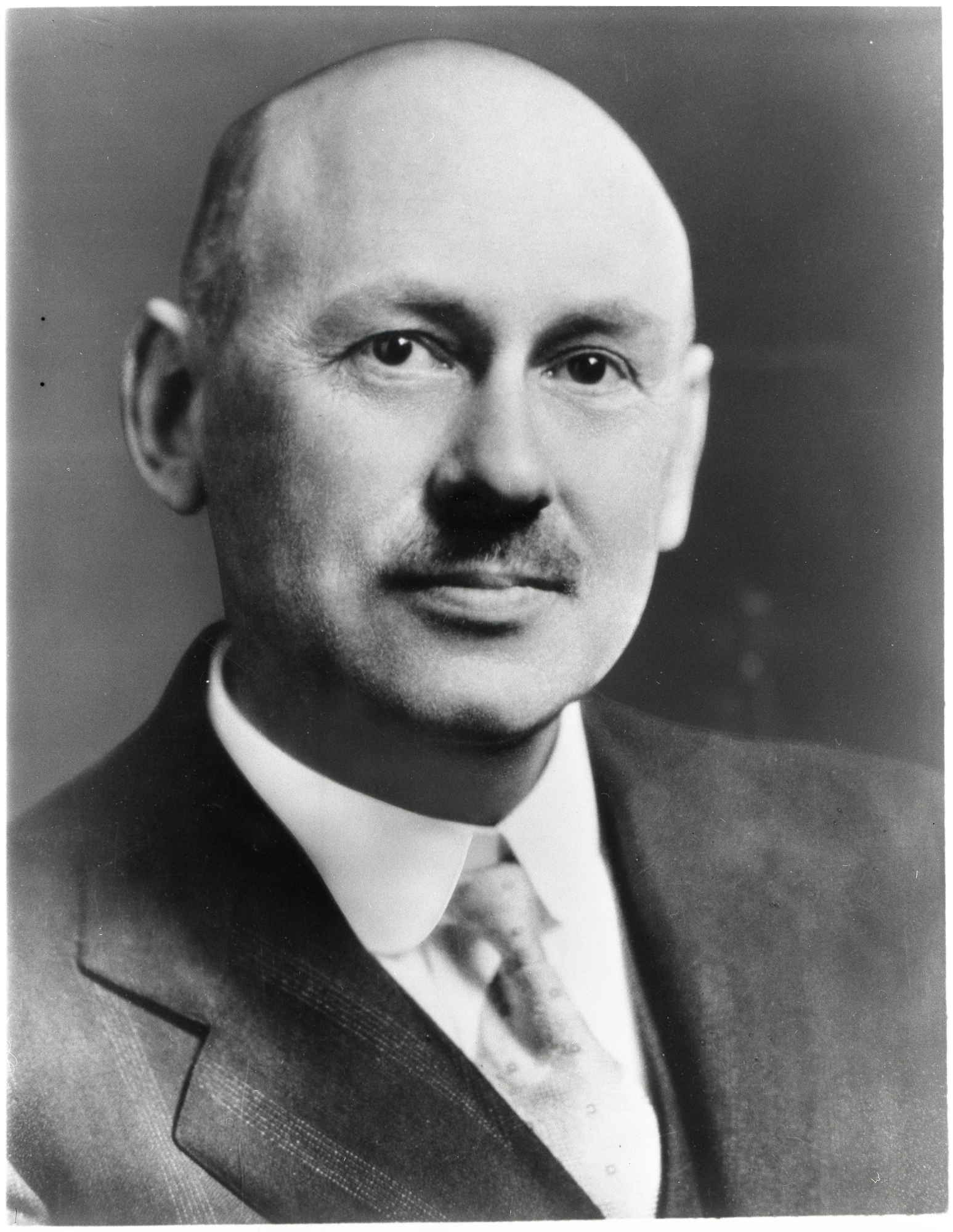
16 March 1926: At 2:30 in the afternoon, Robert Hutchings Goddard, Ph.D., a professor in physics at Clark University, launched the first successful liquid-fueled rocket from his Aunt Effie’s farm (known as “the Asa Ward Farm”) at Auburn, Massachussetts.
In his diary, Dr. Goddard wrote:
“March 16. Went to Auburn with S [Henry Sachs] in am. E [Esther Christine Kisk Goddard] and Mr. Roope [Percy M. Roope, Ph.D.] came out at 1 p.m. Tried rocket at 2:30. It rose 41 feet & went 184 feet in 2.5 secs., after the lower half of the nozzle burned off. . . .”
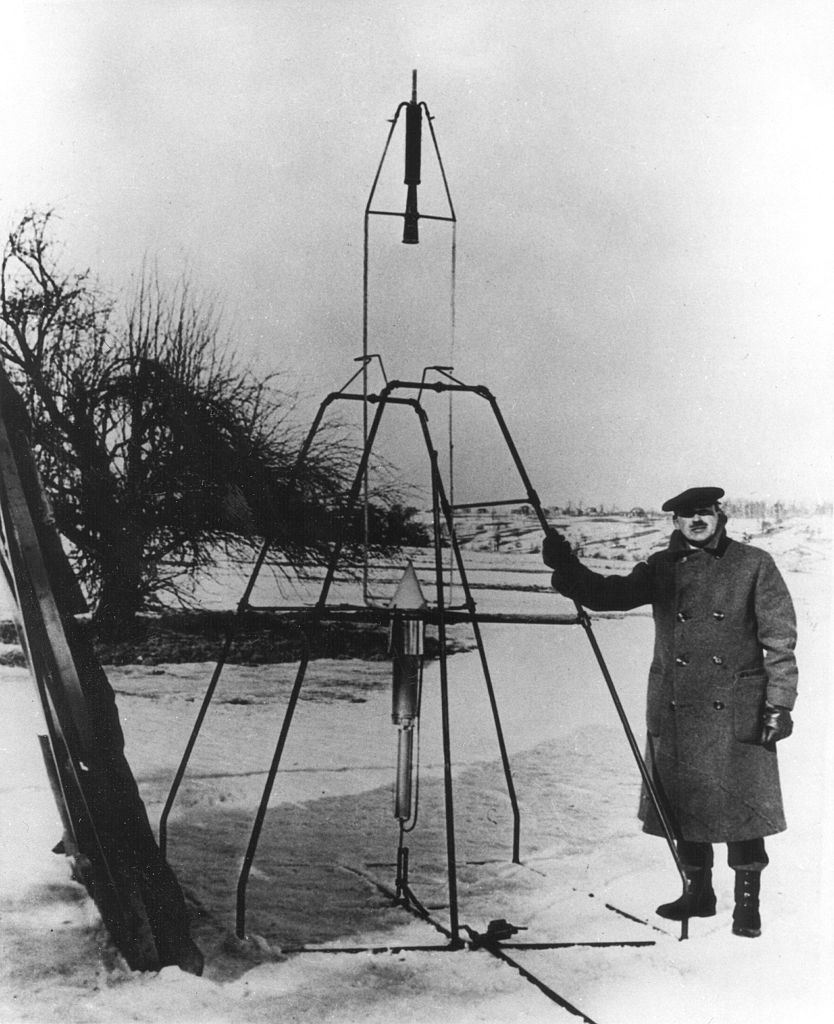
The following day, he described the rocket flight in greater detail:
“”The first flight with a rocket using liquid propellants was made yesterday at Aunt Effie’s farm in Auburn. The day was clear and comparatively quiet. The anemometer on the Physics lab was turning leisurely when Mr. Sachs and I left in the morning, and was turning as leisurely when we returned at 5:30 pm. Even though the release was pulled, the rocket did not rise at first, but the flame came out, and there was a steady roar. After a number of seconds it rose, slowly until it cleared the frame, and then at express train speed, curving over to the left, and striking the ice and snow, still going at a rapid rate. It looked almost magical as it rose, without any appreciably greater noise or flame, as if it said ‘I’ve been here long enough; I think I’ll be going somewhere else, if you don’t mind.’ Esther said that it looked like a fairy or an aesthetic dancer, as it started off. The sky was clear, for the most part, with large shadowy white clouds, but late in the afternoon there was a large pink cloud in the west, over which the sun shone. One of the surprising [the rest of this sentence is from the next page] things was the absence of smoke, the lack of very loud roar, and the smallness of the flame.”
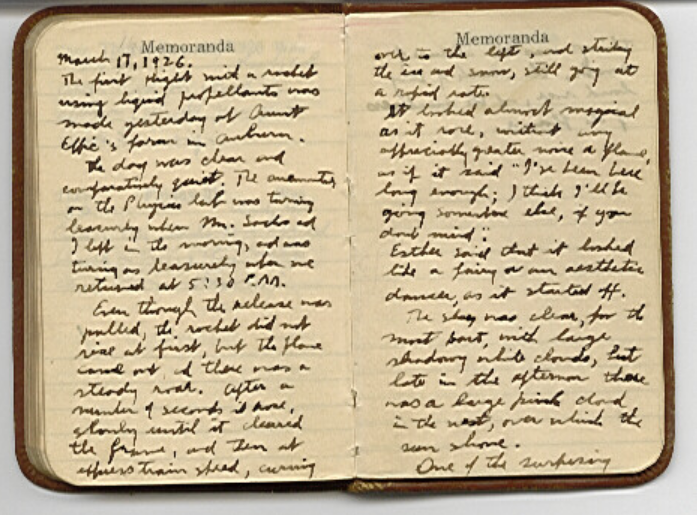
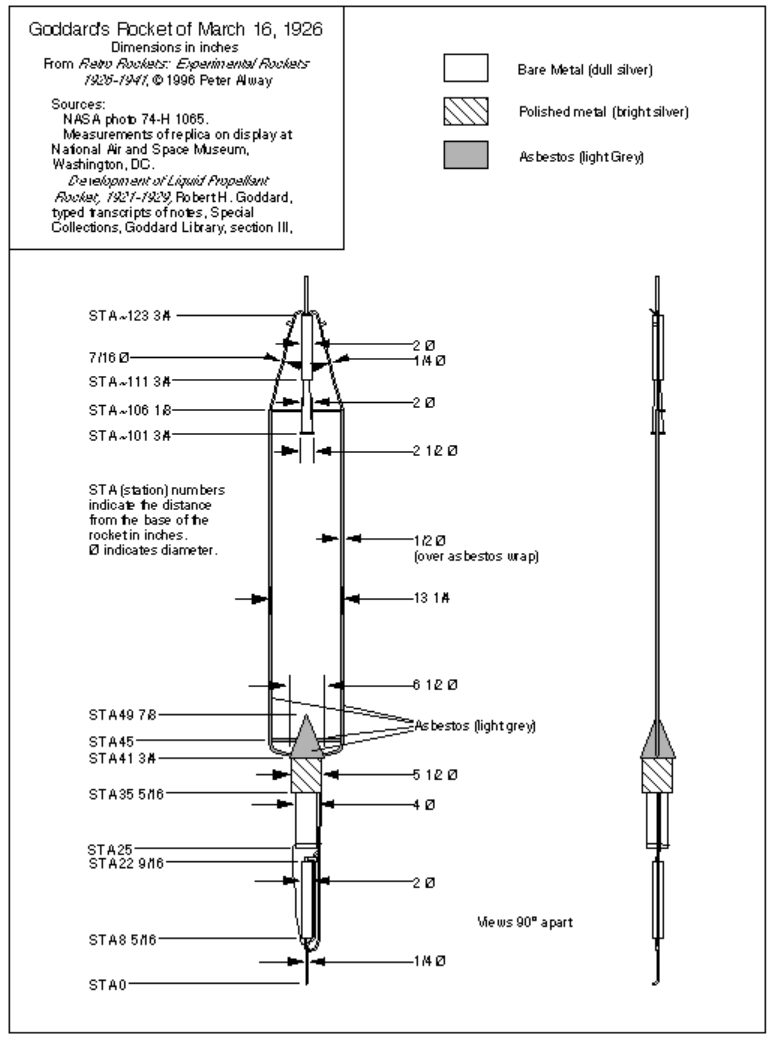
The rocket, called Nell ¹ and known as Goddard 1, was fueled by gasoline and liquid oxygen. It was 11 feet, 3 inches (3.429 meters) tall and weighed approximately 10.4 pounds (4.7 kilograms) when fueled. The engine produced an estimated 9 pounds (40 newtons) of thrust.
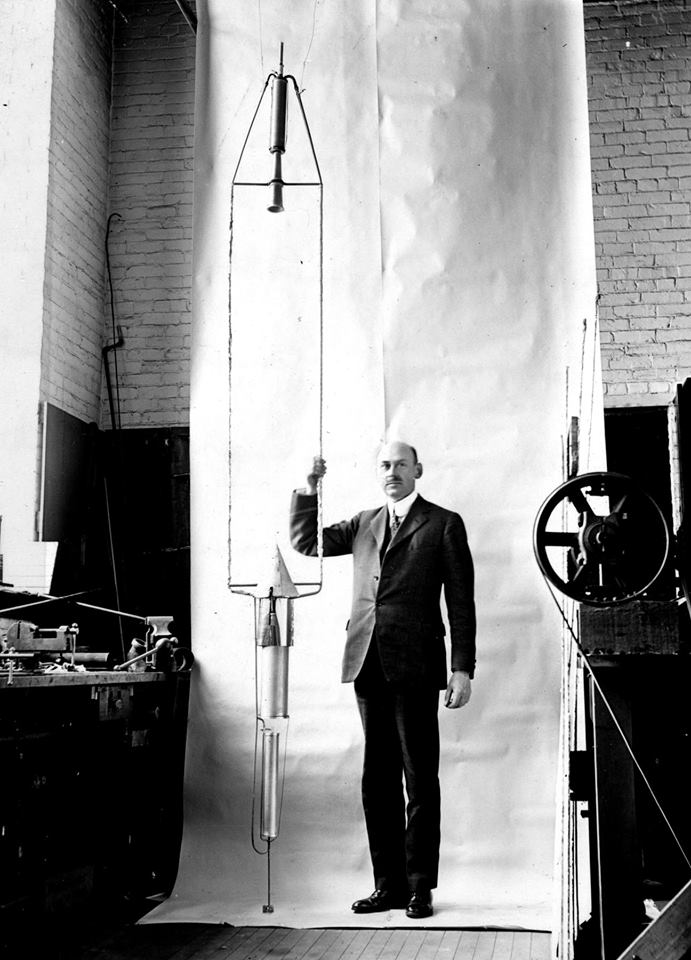
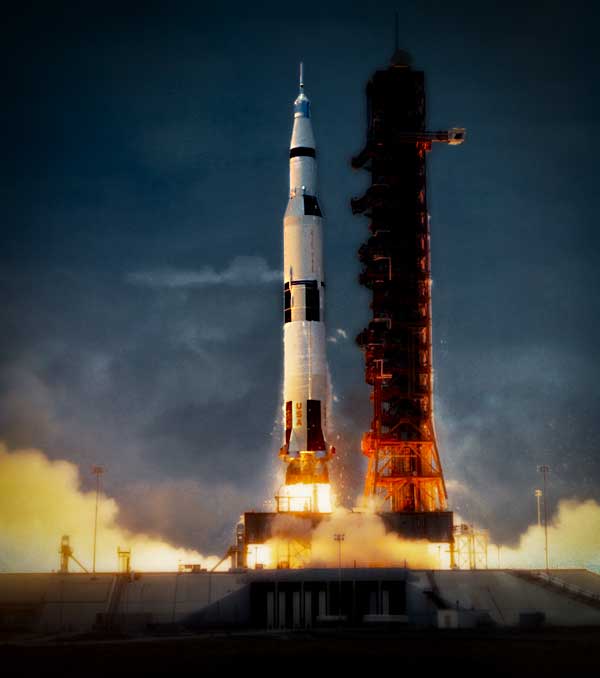
¹ Nell was a reference to the title character, “Salvation Nell,” from a 1908 play by Edward Brewster Sheldon. The character was portrayed by a leading actress of the time, Minnie Maddern Fiske, née Maria Augusta Davey, and popularly known simply as “Mrs. Fiske.”
© 2019, Bryan R. Swopes